Ninnaji Temple, a UNESCO World Heritage Site in Kyoto, offers a journey through time. Founded in 888, this Shingon Buddhist temple showcases exquisite architecture and cultural treasures. Explore the historic Nio-mon Gate, the revered Kondo (main hall), and the rare five-story pagoda. Delve into the serene gardens, including the Omuro Cherry Blossom Garden. Immerse yourself in the spiritual ambiance and discover the intricate statues at the Reiho-kan Museum. Ninnaji’s rich history, architectural marvels, and picturesque gardens create a captivating experience for visitors seeking cultural immersion and tranquility in the heart of Kyoto.
Ninnaji Temple is a Buddhist temple in the western part of Kyoto. It is one of the many historically significant temples in the city and is recognized as a UNESCO World Heritage Site. The temple belongs to the Shingon sect of Buddhism and serves as the head temple of the Omuro School within the sect.
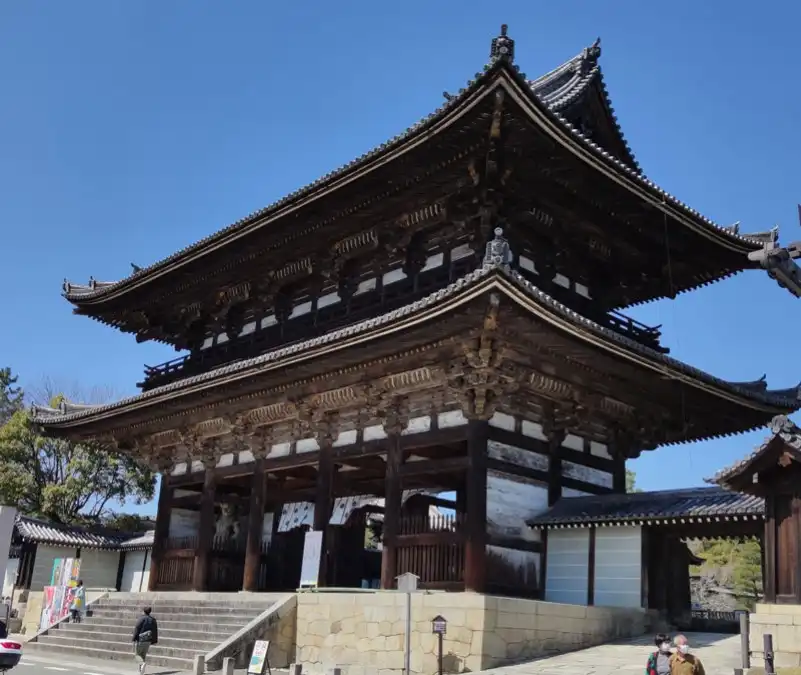
Ninnaji Temple was originally established in 888 during the Heian period, and it has undergone several reconstructions and expansions over the centuries. The temple complex covers a vast area and features numerous buildings, gardens, and cultural treasures.
Getting around Ninnaji Temple
Gate
The third Shogun in Edo Period, Tokugawa Iemitsu donated the Nio-mon Gate to Ninnaji Temple. It is an important cultural property.
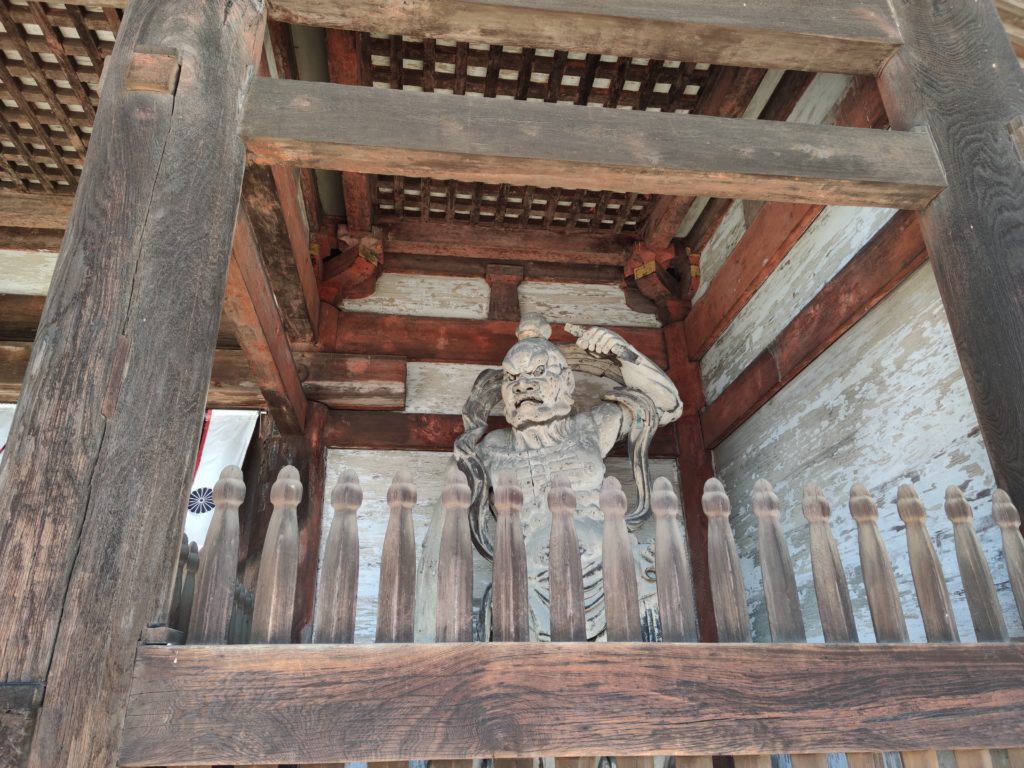
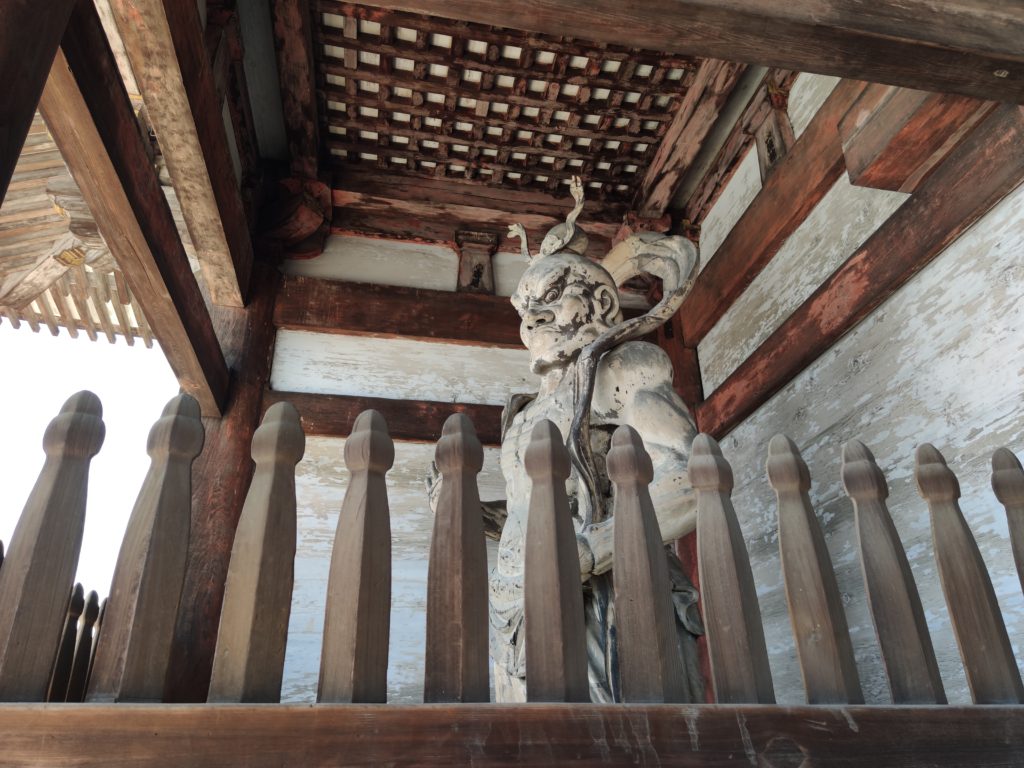
Goten
One of the main attractions of Ninnaji Temple is the Goten, or the main hall, which is an impressive structure with a distinctive architectural style (so-called “shinden-zukuri.”) The Goten consists of several interconnected buildings and serves as the residence of the head priest. It is a National Treasure of Japan.
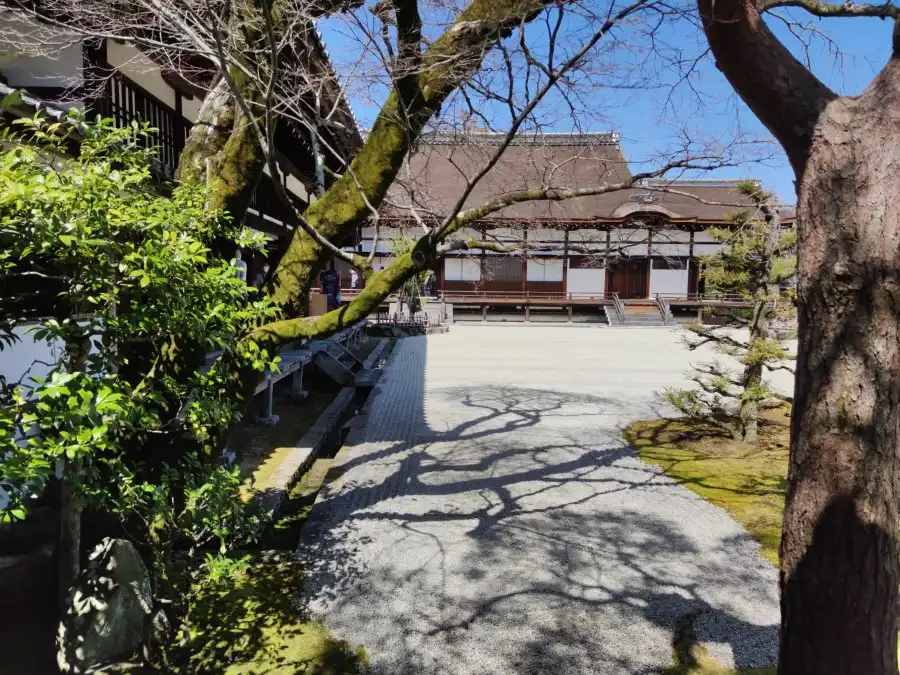
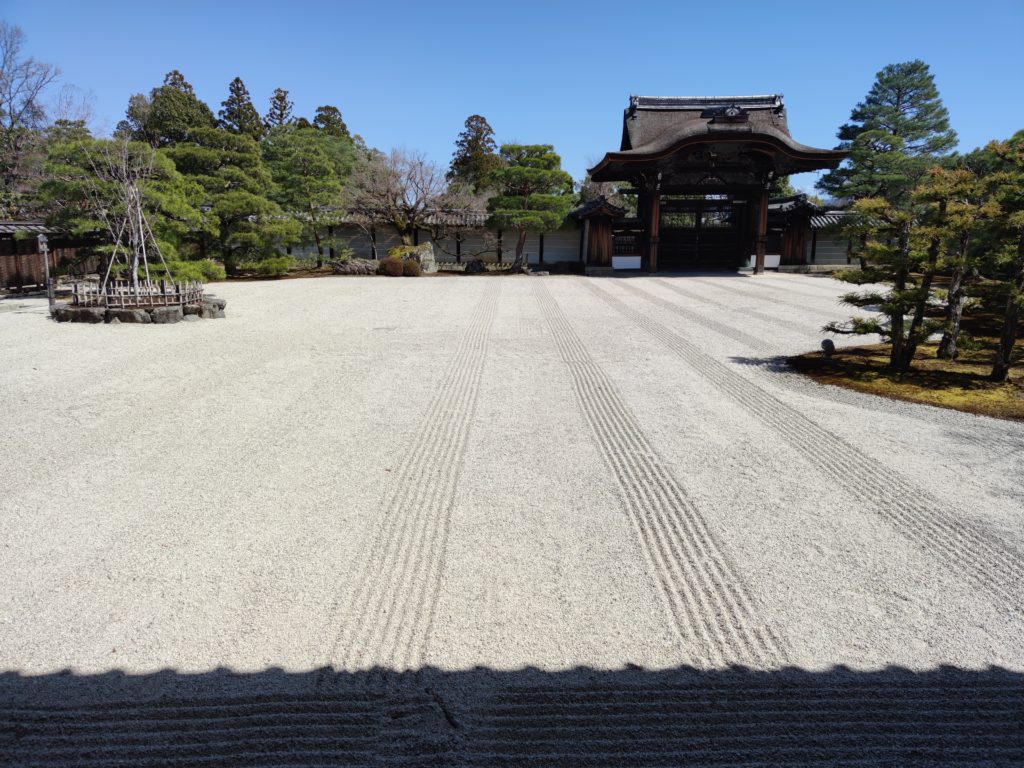
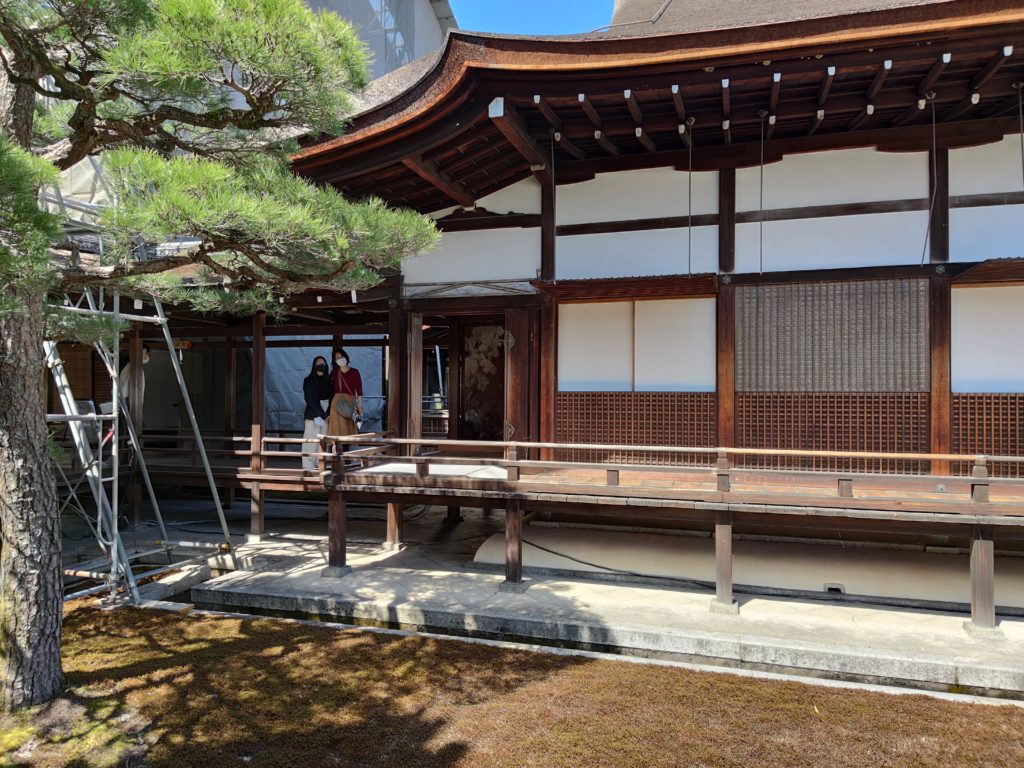
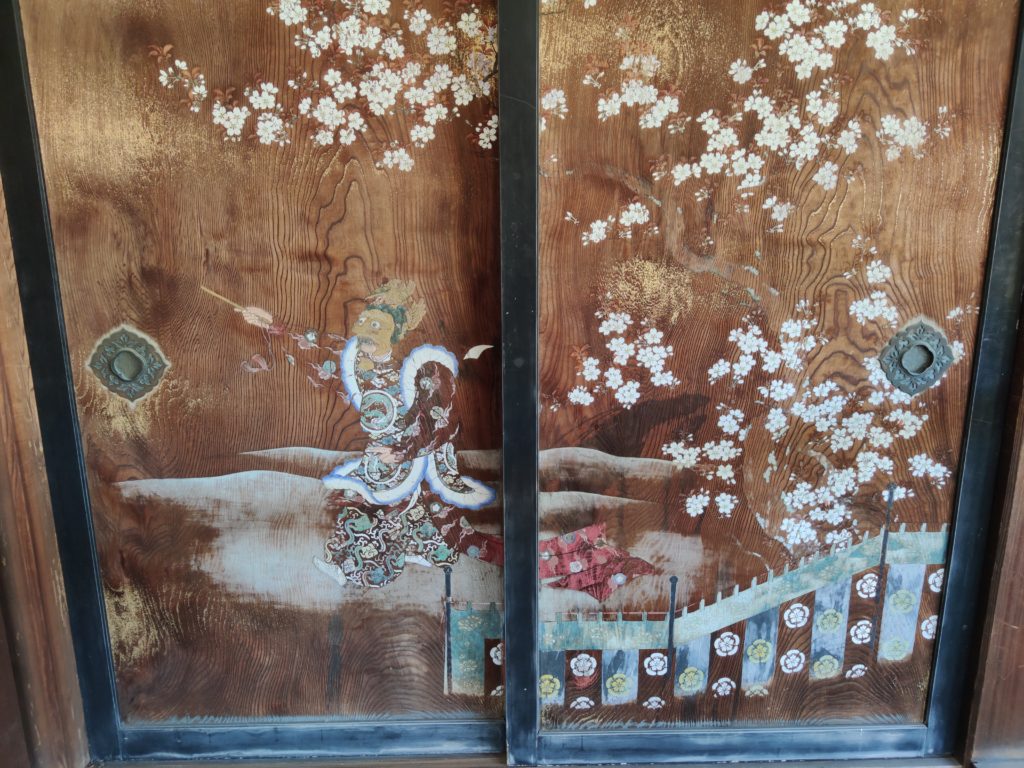
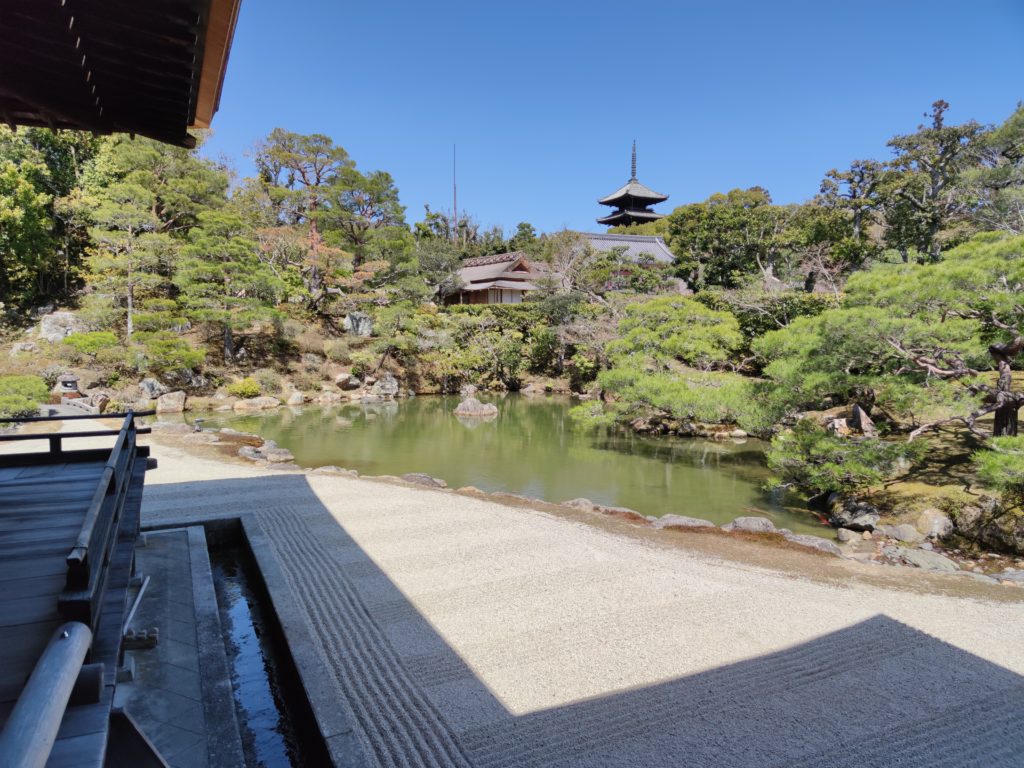
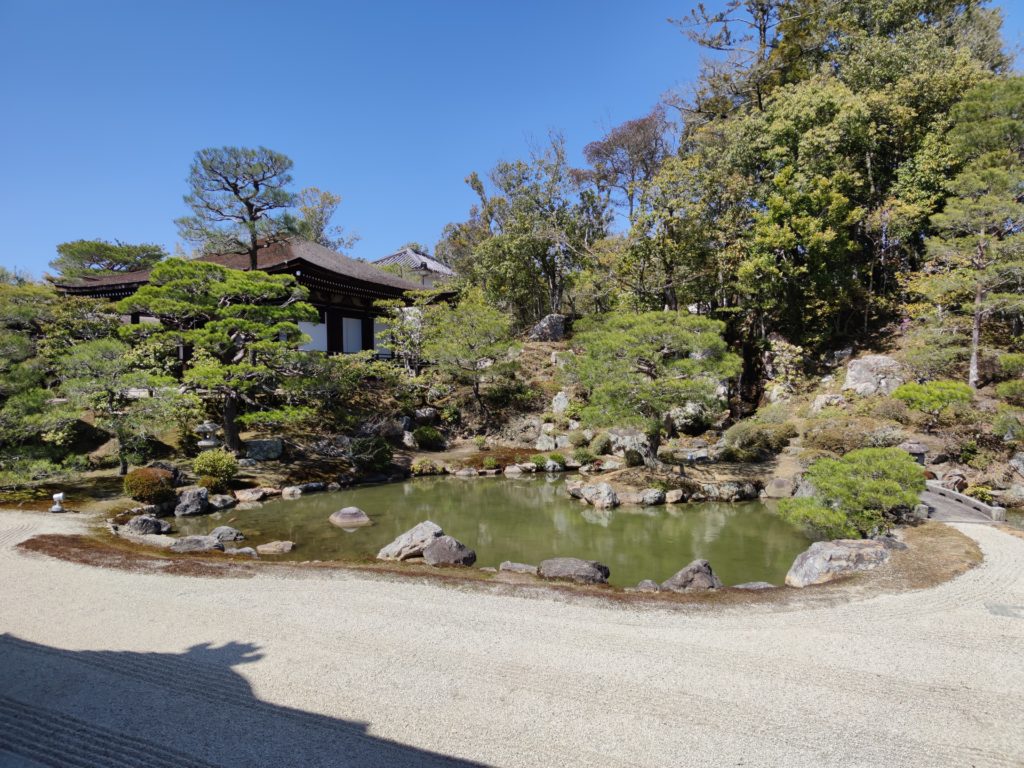

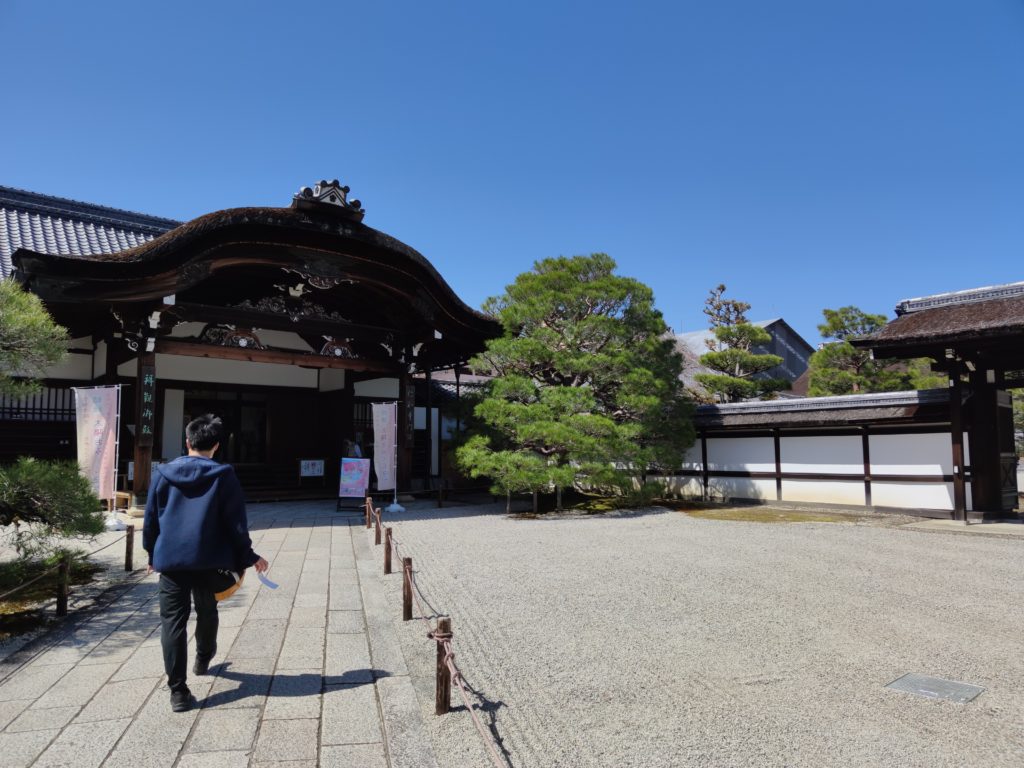

Kannon-do Hall
Kannon-do Hall is an important cultural asset. The interior is usually closed to the public.
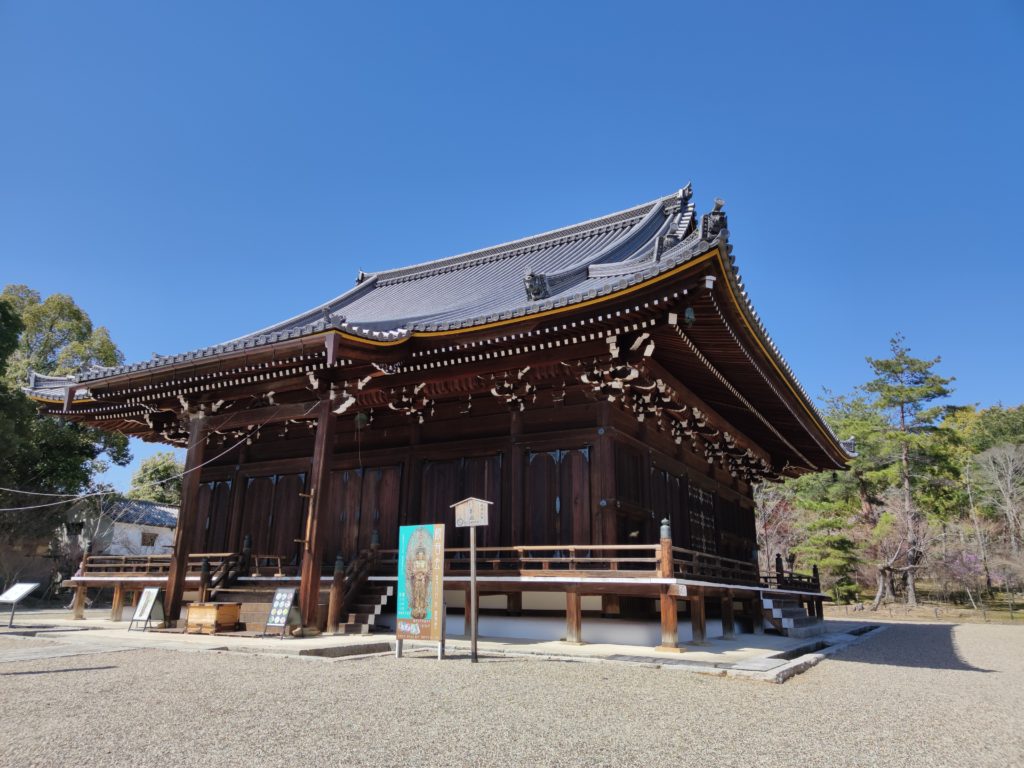
Mikagedo
The Mikagedo is an Important Cultural Property, and inside are statues of Kobo-Daishi, Ex-Emperor Uda, and Prince Seishin, the second head of Ninnaji Temple. The Mikagedo was relocated from part of the Seiryoden Hall of the Imperial Palace during the Edo period.
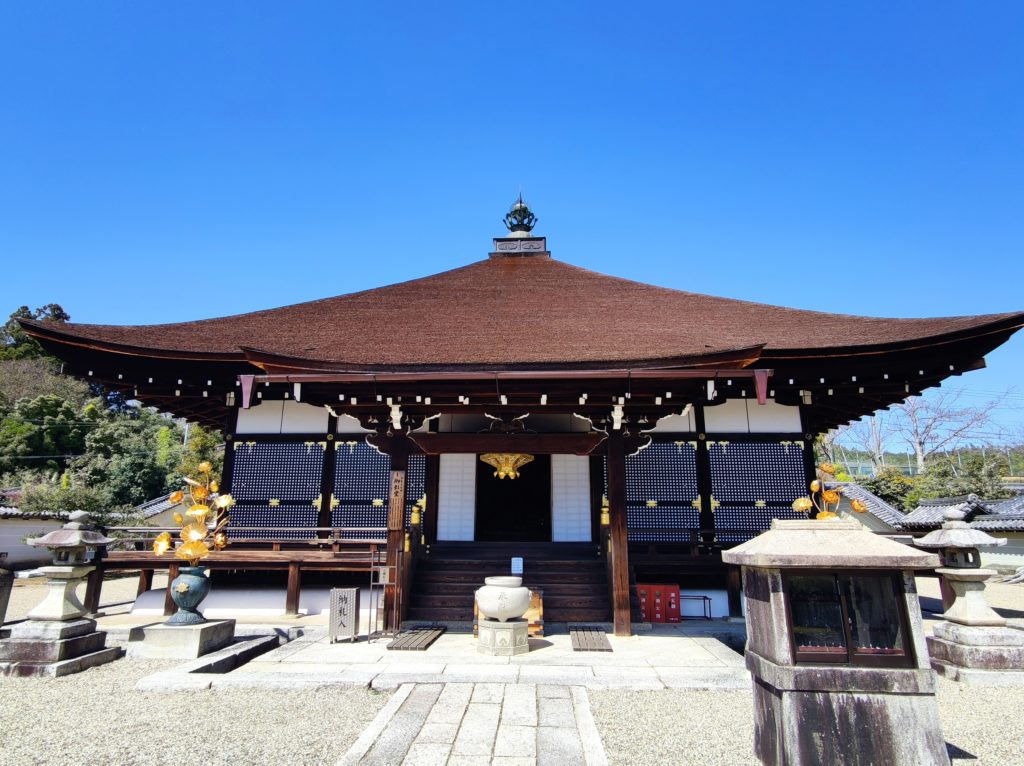
Mizukake Fudo
Mizukake Fudo was a place where people pray by pouring water on the statue of Fudo Myoo. The rock on which Fudo Myoo stands is “Kanko-koshikake-ishi”. When Sugawara Michizane came to greet Hōhō Uta at Ninnaji Temple, he sat on this stone and waited for Hōhō Uta to finish his invocation. Michizane was unwillingly transferred to Dazaifu (Kyushu) and died there. Later people enshrined him at the Kitano Tenmangu Shrine,
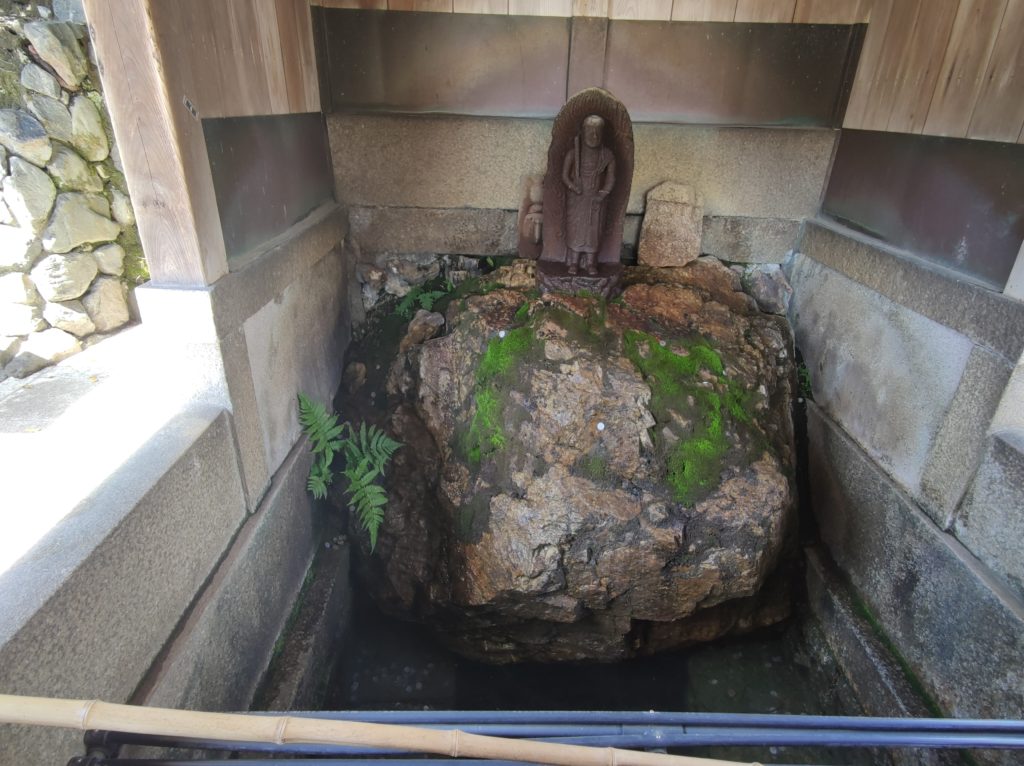
bell tower
The bell tower is an important cultural property. It is rare to see the bell tower of a temple painted in vermilion.。
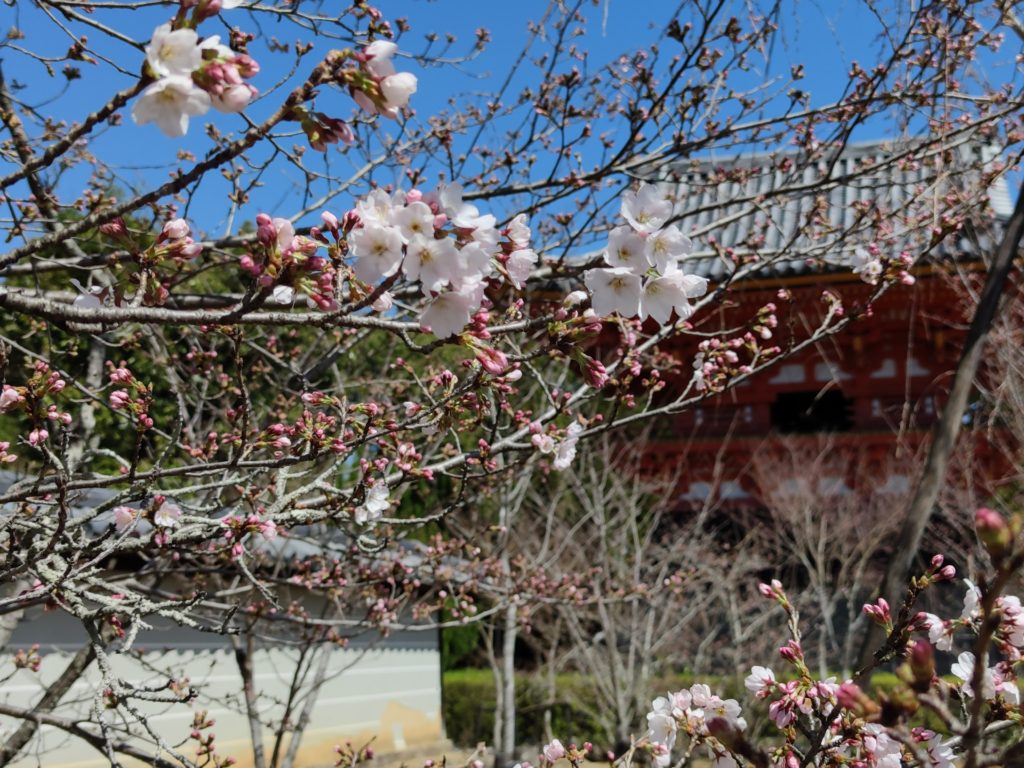
Kondo (main hall)
Kondo (main hall) is a national treasure. The main deities of Ninnaji Temple, Amida Sanson, are here. The hall was relocated from the Imperial Palace’s Shikinden Hall during the Edo period (1603-1868). No wonder the design is very Heian-like.
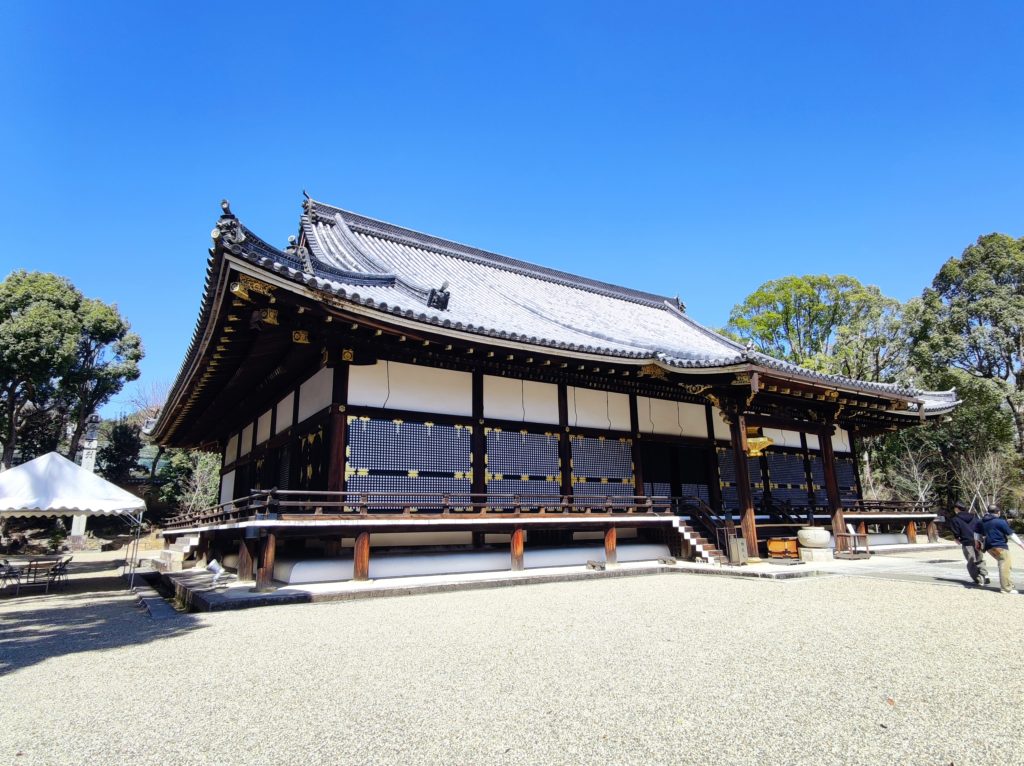
Inside the Kondo, behind the platform where the principal image is enshrined, there is a mural painting of the Five Great Myoo (五大明王). This precious mural painting can only be seen by dim hand-lighting, even by monks. The Fudo Myoo is 2.2 meters high and 3.7 meters wide. It is rarely open to the public. So if you have the chance, don’t miss it. It’s a real gem in Kyoto.
Sutra storehouse (Kyozo)
The sutra storehouse (Kyozo) is an important cultural property. Inside, there is an octahedron rotating bookcase (rinkura).
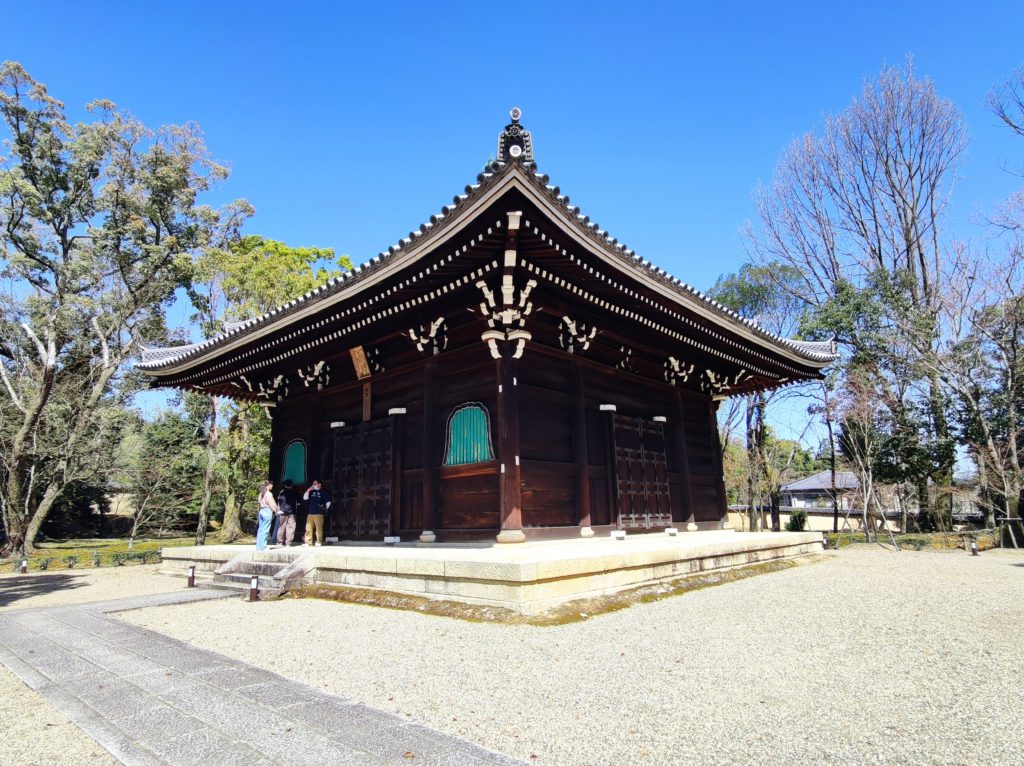
Five-story pagoda
The temple grounds also contain a five-story pagoda, known as the “Gojunoto,” which is another iconic symbol of Ninnaji.

Gardens
Ninnaji Temple is particularly famous for its gardens. They are the finest examples of traditional Japanese landscaping. The gardens incorporate elements such as ponds, streams, bridges, and meticulously maintained flora, creating a serene and picturesque atmosphere. One of the notable gardens within the temple complex is the Omuro Cherry Blossom Garden, which attracts visitors during the cherry blossom season in spring.
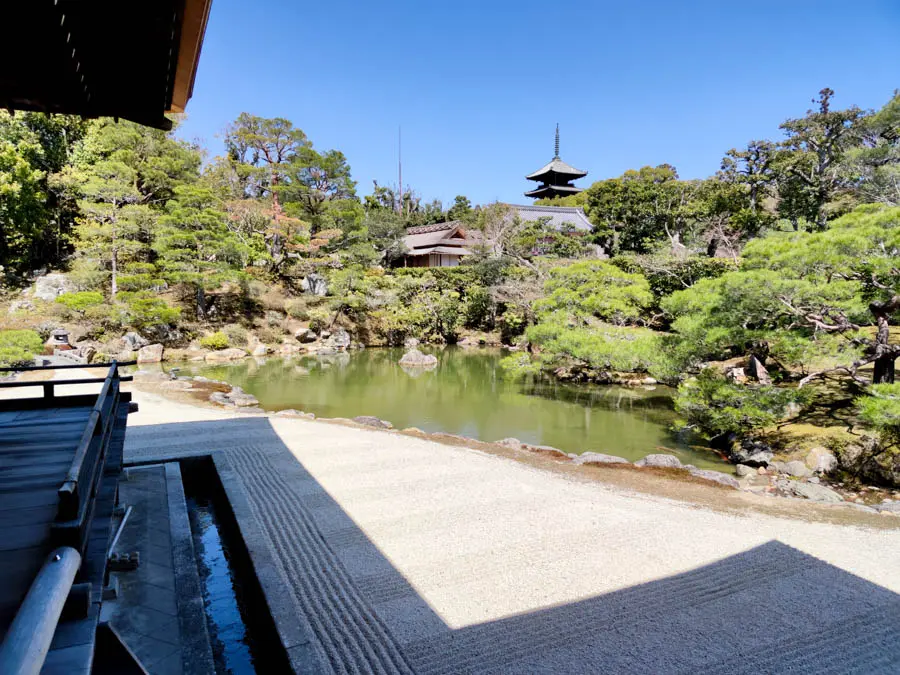
Furthermore, Ninnaji Temple used to have a connection to the imperial family of Japan. Emperor Uda established it and the imperial family members served as chief priests for generations (Monzeki temple).
Visiting Ninnaji Temple offers visitors an opportunity to experience the rich cultural and historical heritage of Kyoto. The serene atmosphere, stunning architecture, and meticulously crafted gardens make it a popular destination for both locals and tourists seeking spiritual solace and natural beauty.
Statues in Reiho-kan Museum
Ninnaji Temple houses various statues of religious and historical significance:
- Amida Nyorai (Amitabha Buddha) Statue: Amida Nyorai is the Buddha of Infinite Light and Infinite Life, offering salvation and rebirth in his Pure Land to those who sincerely call upon his name.
- Shaka Nyorai Statue: Shaka Nyorai, also known as Shakyamuni Buddha, is the historical Buddha who attained enlightenment. The statue of Shaka Nyorai often portrays him in a seated position, with one hand touching the ground in the earth-touching mudra, symbolizing his enlightenment.
- Yakushi Nyorai Statue: Yakushi Nyorai is the Buddha of Healing and Medicine. The statue represents Yakushi Nyorai with a medicine jar in one hand and a healing plant in the other, symbolizing his ability to alleviate suffering and promote physical and spiritual well-being.
- Fudo Myoo Statue: Fudo Myoo, also known as Acala, is a wrathful deity in Esoteric Buddhism. The statue of Fudo Myoo depicts a fierce figure with a sword in one hand and a rope in the other, representing the cutting of ignorance and the binding of demons.
- Kannon Bodhisattva Statue: Kannon (Avalokiteshvara) is a Bodhisattva of compassion and mercy. The statue of Kannon often shows a figure with multiple arms, symbolizing the many compassionate actions and abilities to assist sentient beings.
Reiho-kan museum is open to the public for a limited time. You cannot take photos inside the building. You can see the photos of some statures here (Japanese only).
Nearby spots from Ninnaji Temple
Ryoanji Temple is a world heritage site and famous for its rock garden. It is one of the finest examples of Japanese Zen gardens.
Kyutei Omuro is a traditional house. It’s famous for stunning view of the garden reflected on the surface of a wooden table.
The combination of vast temple grounds, gardens, and Zen heritage makes Myoshinji a significant cultural and spiritual destination in Kyoto.
Behind the World Heritage Site Ninaji Temple, there is a mountain path called Omurojojusan, which is dotted with 88 sacred temples.
Model courses for visiting Ninnaji
You can visit Ninnaji Temple together with Kinkakuji Temple and Ryoanji Temple. These three temples are World Heritage sites.
Visit all five-story pagodas in Kyoto. Though, they are not very close to each other.
Related articles:
[…] as the Omuro Residence, is a historic, traditional Japanese house located in the vicinity of the Ninna-ji Temple in Kyoto. Kyutei Omuro was built in 1937. It is a Sukiya style architecture with magnificent […]
[…] is a 2.5 km long sightseeing road that goes from Kinkakuji Temple to Ninnaji Temple via Ryoanji Temple. It takes about 18 minutes on foot from Kinkakuji Temple to Ryoanji […]
[…] Ninnaji Temple (仁和寺) Myoshinji Temple (妙心寺) […]
[…] There are other world heritage sites near Kinkakuji. After visiting Kinkakuji early in the morning, you can easily walk to Ryoanji and Ninnaji. […]
[…] Temple and Ninnaji Temple are nearby. Starting from Kinkakuji Temple, you can make a perfect half-day walking […]
[…] Temple, Ninnaji Temple, and Jinkoin Temple are three temples in Kyoto that are closely associated with Kobo Daishi, and […]
[…] Ninnaji Temple is a World Heritage Site and the Pagoda is an Important Cultural Property. […]
[…] the Ninnaji Temple, there is a mountain path called Omurojojusan, which is dotted with 88 small Buddhist temples. […]
[…] burial mound complex. Explore historic trails with a one-hour hike, revealing panoramic views of Ninnaji Temple. Immerse in nature and history at this national scenic beauty […]
[…] If you love hiking, try Narabigaoka hill. It only takes one hour to climb the hill. You can enjoy a nice view of Ninnaji Temple. […]